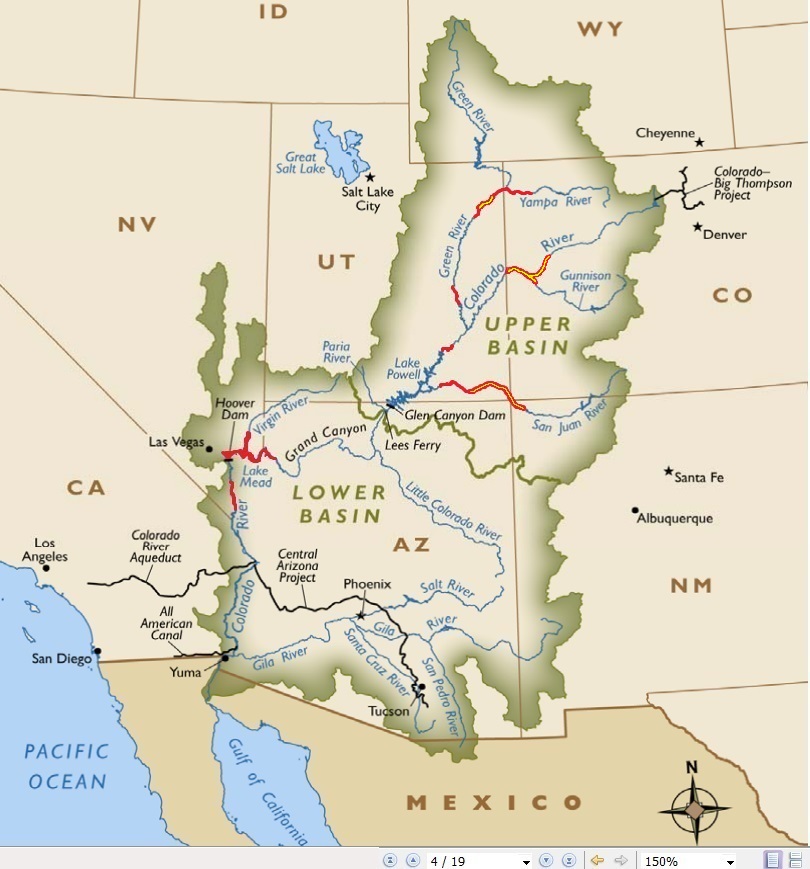GCDAMP RAZU Fish
|
|
Razorback sucker (Xyrauchen texanus)Three to 5 million years ago, a unique-looking fish with a sharp-edged hump “razorback” behind its head swam the Colorado River and its tributaries. The razorback sucker is an endangered, native fish of the Colorado River and the only member of the genus Xyrauchen. It has a dark, brownish-green upper body with a yellow to white-colored belly and an abrupt, bony hump on its back shaped like an upside-down boat keel. One of the largest suckers in North America, the razorback sucker can grow to 3 feet in length and can live for more than 40 years. Razorback sucker can reproduce at 3 to 4 years of age. Depending on water temperature, spawning can occur as early as November or as late as June. In the Upper Colorado River Basin razorback sucker typically spawn between mid-April and mid-June. Razorback sucker eat insects, plankton, and plant matter on the bottom of the river. To complete its life cycle, the razorback sucker moves between adult, spawning, and nursery habitats. Spawning occurs during high spring flows when razorback sucker migrate to cobble bars to lay their eggs. Larvae drift from the spawning areas and enter backwaters or floodplain wetlands that provide a nursery environment with quiet, warm, and shallow water. Research shows that young razorback sucker can remain in floodplain wetlands where they grow to adult size. As they mature, razorback sucker leave the wetlands in search of deep eddies and backwaters where they remain relatively sedentary, staying mostly in quiet water near the shore. In the spring, razorback sucker return to the spawning bar, often quite a long distance away, to begin the life cycle again.
|
| Online training |
Fish Species of the Colorado River in Lower Glen Canyon and Grand Canyon |
Fish photos, information, and maps |
|---|
|
|
